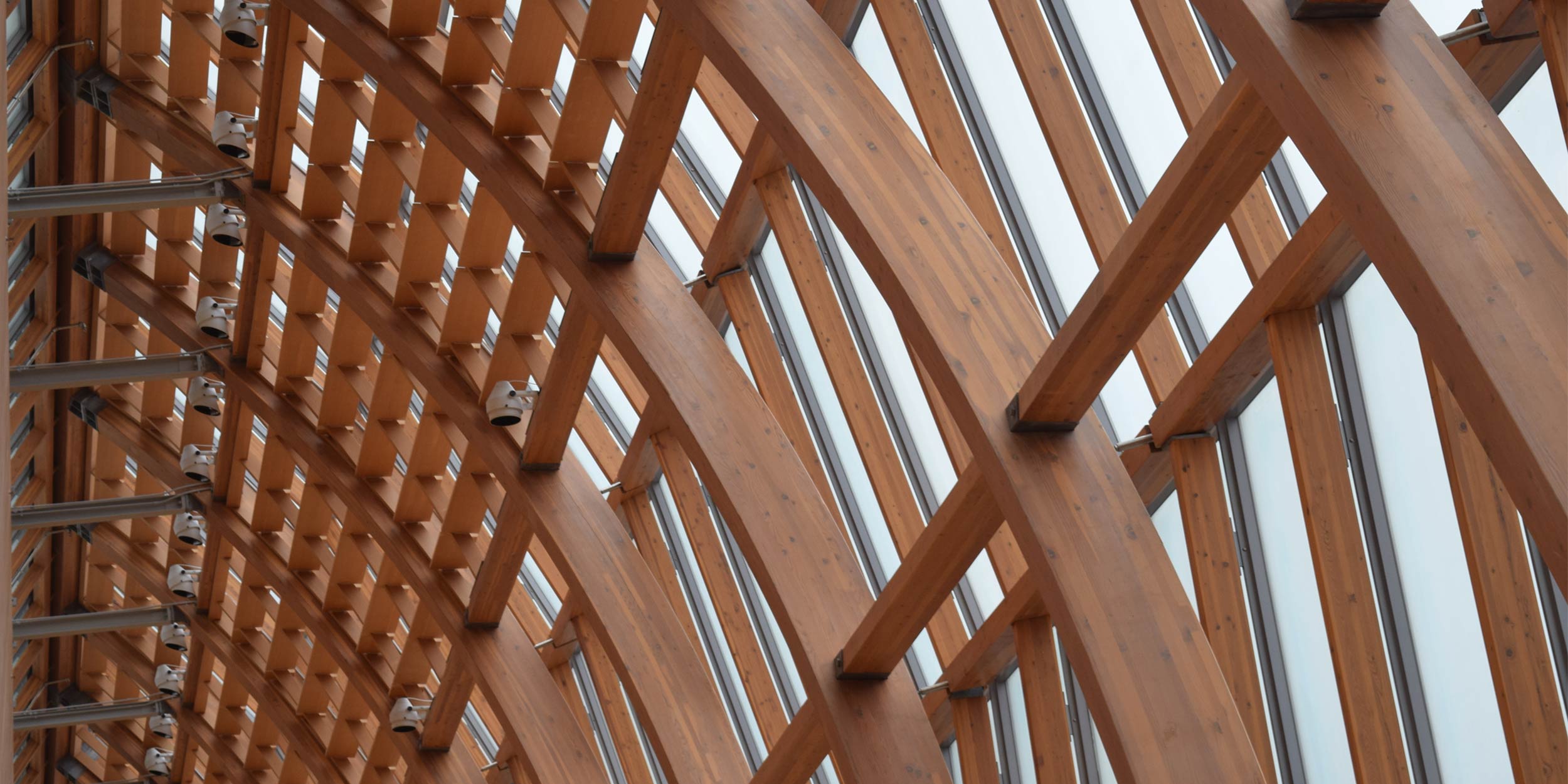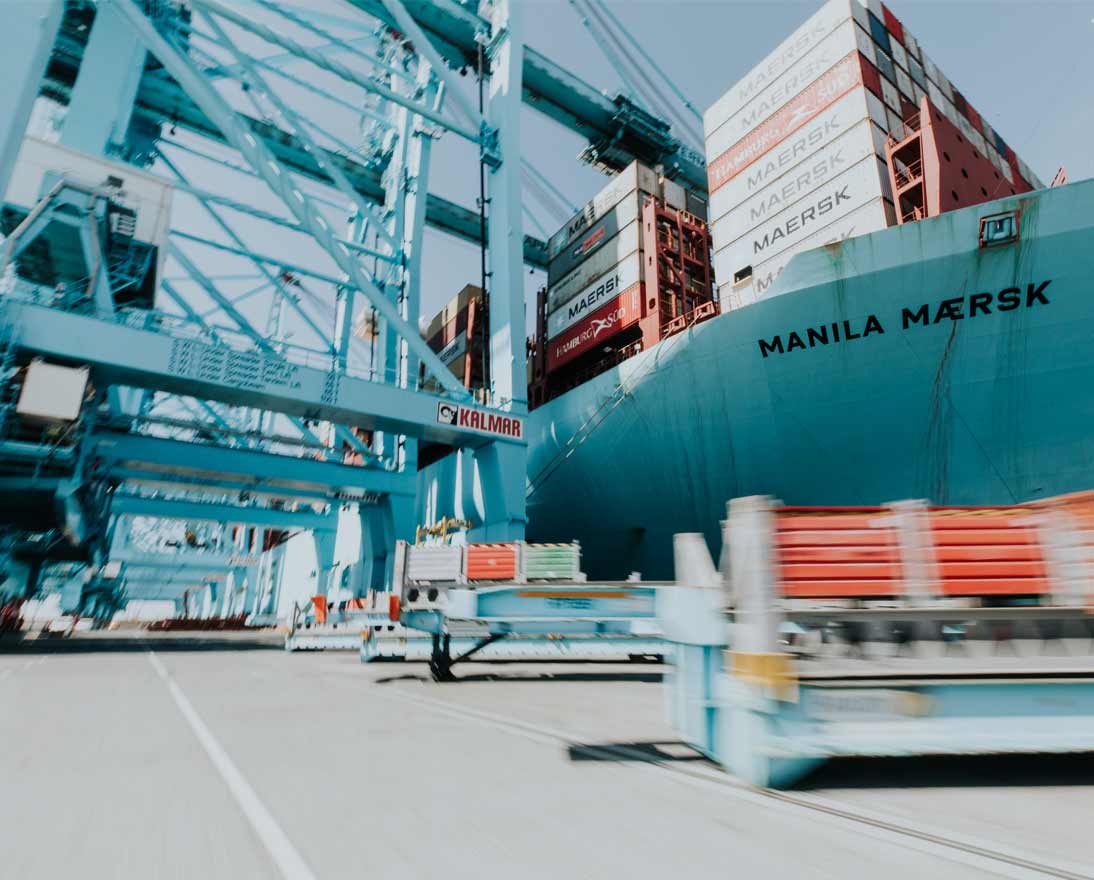Mass timber: Insuring the future of sustainable construction
Net-zero transitionArticleSeptember 16, 20248 min read
Mass timber is leading the charge in creating a more sustainable future for the construction industry. But what is it exactly and how is Zurich North America helping to grow the mass timber market and support customers on their net-zero journeys?
In Bentonville, Arkansas, retail giant Walmart is building a new corporate campus on a 350-acre (142 ha) site. Set to begin opening next year, it will comprise more than 30 buildings, including offices, and conference and learning and development spaces. It’s an impressive campus. But what sets it apart is that the 12 office buildings will be constructed from mass timber – making it the largest mass timber campus project in the U.S.
It represents the continuation of a construction revolution that is seeing big corporate names, including Google, Microsoft and Under Armour, use mass timber in new campus developments. These mass timber buildings are not just getting bigger, but taller, too. The 25-story Ascent residential tower, which rises 87 meters (284 feet) above the skyline of Milwaukee, Wisconsin, is currently the world’s tallest timber building – a record it’s likely to relinquish within a few years.
This could represent good news for the planet. The building industry is one of the largest contributors to climate change, responsible for about 37 percent of global energy-related carbon emissions. About 27 percent is generated by heating, cooling and other day-to-day building energy needs. But about 10 percent is related to construction – in particular, the use of steel and concrete, which require carbon-intensive production. However, building with timber could reduce the carbon footprint of a large building by up to 40 percent – provided the timber is sourced from sustainable forestry.
Driving this trend is mass timber. It’s the name given to a family of engineered wood components fabricated from layers of wood laminated together under intense pressure with powerful adhesives, nails or wooden dowels. But with the relatively new industrialized process of cross-laminated timber, which glues layers of wood at right angles, mass timber now has the required strength and structural rigidity for it to be used in the construction of tall, multistory buildings.
“Mass timber is a very strong, durable, versatile and, importantly, sustainable construction material,” explains Patrick McBride, Head of Construction Property at Zurich North America. “With cross-laminated timber you have the load-bearing capabilities that allow it to substitute for steel and concrete in many structural applications, including beams and columns; floor, roof and wall panels; and much more.
“It’s changing the game in the execution of commercial projects,” adds McBride, “and is rapidly becoming the building material of choice for a growing number of bold and ambitious commercial projects in the U.S. and around the world.”
Timber’s new reputation
In the 19th and 20th centuries, timber’s reputation for being combustible saw it overtaken as the predominant construction material by steel and concrete. Interest in timber returned with the development of cross-laminated timber in Austria and Germany in the early 1990s, which gained traction in the 2000s due to the green building movement. But many building code regulators and insurance companies remained skeptical of its safety.
But McBride says that mass timber structures have been tested and engineered to perform differently than traditional light wood frame structures. “Testing has found that the size and dense structure of mass timber can provide inherent fire-resistant properties when properly designed,” he explains.
When a mass timber element is exposed to fire, the outer surface burns and develops a char layer. This outer layer of char insulates the inner core of the timber element and helps protect the structural integrity of a mass timber building. “This protective char forms at predictable rates,” adds McBride. “This allows mass timber buildings to be designed to achieve the desired fire resistance ratings required by building codes. However, the methods and feasibility of repairing mass timber after a fire is something the industry is still grappling with.”
As well as fire tests, Zurich North America has also observed earthquake simulations. Weighing about one-fifth of a comparable concrete structure, mass timber buildings have a high strength-to-weight ratio, meaning they can be designed to provide strong resistance to collapse from earthquakes. Mass timber’s lower weight also reduces foundation requirements compared to concrete buildings.
Mass timber’s official status
A key milestone came in 2021 with the inclusion of tall mass timber structures in the International Building Code. It allows for the construction of mass timber towers up to 18 stories in the U.S., subject to specified “encapsulation” measures, such as the use of drywall, gypsum or other fire-resistant materials on exposed timber to provide more fire protection. The additional introduction of an American National Standard, regarding the fabrication of cross-laminated timber, has helped to further drive interest in mass timber construction.
These milestones helped give Zurich North America the confidence in 2021 to launch two pioneering Builders Risk insurance policies with up to USD 50 million in capacity, for qualifying risks. One policy provides coverage for the construction risks of one-off mass timber buildings, and the other for multiple mass timber buildings via a Master Builders Risk program.
The launch of these policies has helped Zurich North America become the market-leading commercial insurer of mass timber projects, providing about one-fifth of the available underwriting capacity. Zurich North America’s team of mass timber risk consultants can also provide specific risk insights on building with this sustainable material – a vital service, as many customers are still inexperienced with using mass timber as a construction material.
“New low-carbon technologies, like cross-laminated timber, present new risks to our customers,” says Justine Kelly, Head of Sustainability, Zurich Commercial Insurance and Group Underwriting. “But the pioneering approach of Zurich North America to participate in early testing and simulations, and to work with the construction industry, has given it a deep understanding of mass timber and the ability to offer customers appropriate cover and risk insights. Working with customers and industry bodies is an approach that Zurich is taking across the globe to understand the risks associated with new sustainability processes and technologies that our customers depend on to achieve net-zero emissions.”
The benefits of mass timber
It’s easy to see the appeal of mass timber. As well as producing much lower carbon emissions than concrete and steel, mass timber also contributes to a building's aesthetic appeal. Exposed internal wooden beams and panels can create a warm and inviting atmosphere that contributes to wellbeing and helps occupants connect to nature. In the workplace, these “biophilic” benefits have been found to improve employee satisfaction, reduce absenteeism, increase levels of concentration and raise productivity.
Mass timber buildings are also typically faster to build and may require fewer workers on site, which can reduce labor costs, too. This is because mass timber structures are designed and largely prefabricated offsite, before being shipped to the construction site in modular components and rapidly fitted together and secured. According to Tim Gokhman, managing director of Ascent developer New Land Enterprises, mass timber construction projects like Ascent may require 90 percent less construction traffic and 75 percent fewer workers onsite, and they may be 25 percent faster to build than traditional projects. This all contributes to lower emissions as well.
“The prefabrication of mass timber structures is a benefit, but it poses a risk, too,” says McBride. “When we work with a mass timber customer, we ask: ‘Where’s the material coming from?’ ‘Who is the manufacturer?’ ‘How will it be protected in transit?’ and other engineering questions. This is because if the prefabricated structures are damaged in transit or during construction then they need to be redesigned and reproduced by the manufacturer, which can lead to expensive construction delays.”
It is these kinds of insights that have helped Zurich North America become a leading authority on both the opportunities and risks associated with mass timber, contributing to a mass timber guide published by the Council on Tall Buildings and Urban Habitat. And by helping the construction industry to understand and mitigate these risks – from fire to water (wood can absorb water, causing shrinkage, expansion, staining or even mold growth) – Zurich North America is helping to grow the market. In fact, one forecast estimates that 750 new mass timber buildings will be built annually in the U.S. by 2025 – soaring to 5,000 per year by 2035.
It represents a great market opportunity for Zurich North America. But more important, it forms part of Zurich’s commitment to support customers on their net-zero journeys.
“The mass timber market aligns with our own net-zero commitment,” says McBride. “We want to collaborate with customers in ways that will help businesses achieve a reduced carbon footprint and a more sustainable future for our communities and our planet. Supporting the growth of the mass timber market is just one way of helping us to achieve that goal.”



